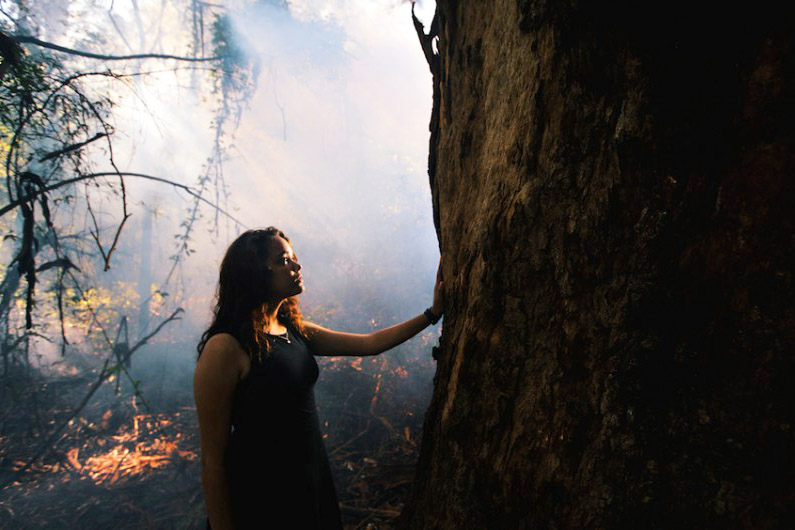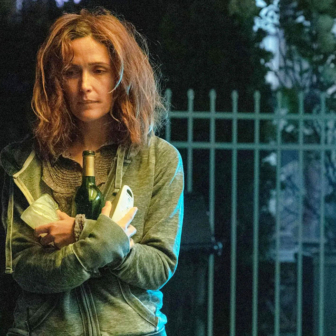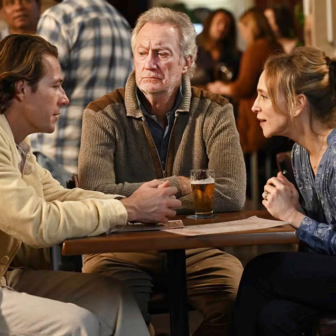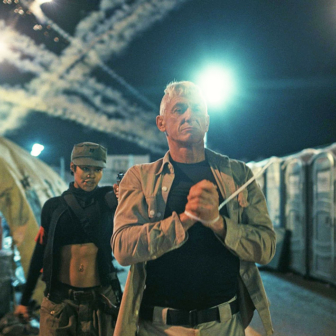“Everything’s changed,” said the film festival veterans in the long queues at the State, at Events cinemas in George Street, at the Dendys in Newtown and at the Quay, the Cremorne Orpheum, the Casula Powerhouse and you-name-it elsewhere. Sometimes what’s meant is merely that in the viewer’s gaze everybody looks younger; but in fact, the army of black t-shirted veterans included numerous grey heads, and guides who could remember film festivals of several decades back. The sense of change has to do with the sheer size of the event: red-carpet screenings, opening and closing night galas; 335 screenings altogether, and along with the headline titles in fiction and documentary, the Freak-Me-Out program of spooks and ghouls, the programs of prizewinning short films; Don Siegel’s Invasion of the Body Snatchers out at the Blacktown Skyline drive-in – lucky them; the excellent South African program, which took us into the film work of the festival director’s home country (and it’s very good news that Nashen Moodley will continue as director for at least another four years). If the sense of change was also a sense of loss, that was about nostalgia for an old sense of community. One cinephile of long standing used to say that in her imagination the film festival was really always there, waiting for us in the middle of the city; we’d enter the milieu and connect, with international cinema and each other, ritually once a year.
There were two big sessions of new work by Aboriginal film-makers, Screen: Black. For several years in May, an Indigenous program called Message Sticks took up a weekend at the Opera House; then, as it seemed at the time, it was cannibalised by the main program. But the festival, like other major cultural institutions, must find its way of recognising the first peoples, and if anything was lost by that move, perhaps more was gained in audiences; both of the Screen: Black programs were sold out. Some of the films from one strand, Songlines on Screen, were and are shared with NITV; others, from Pitch Black Shorts, may still be looking for outlets. The audiences heard deeply foreign Australian languages filling the soundtracks: Djambarrpuyngu (from Arnhem Land); Miriwoong; Kukatja; Yolngu; Warlpiri; Anmatyerre. My two favourites were the magical fifteen minutes of Karroyul (director, Kelrick Martin) in which an unnamed, bereaved young girl discovers home country in bushland which is also a massacre site; and the ten-minute tragi-comedy of Benjamin Southwell’s On Stage, in which Warren Clements plays, superbly, a cross-dressing singer who is both gender-bending and black.
The Melbourne Film Festival, forthcoming (30 July–6 August), is doing black film differently, with a retrospective of David Gulpilil’s screen work going right back to Nicolas Roeg’s Walkabout (1971) and on-stage discussion with Gulpilil; and since, as Charlie’s Country most recently showed us, he’s one of the most remarkable film actors on the planet, this will be highly rewarding.
Most of the Sydney festival’s headline features are slated for commercial release; here, for all those who must have their literary classics illustrated, comes Far from the Madding Crowd; here too the newest version of Madame Bovary. Carey Mulligan is in the first, Mia Wasikowska in the second; those girls are overworked. Among the Australian features, Last Cab to Darwin is already in general circulation; Ruben Guthrie (mixed press) is forthcoming; Simon Stone’s The Daughter and Neil Armfield’s Holding the Man will find their ways. Alfonso Gomez-Rejon’s Me and Earl and the Dying Girl, a great winner at this year’s Sundance, drew some of us in less because of the program description than for Brian Eno’s music; and it’s worth having in any case, a film that asks for your patience, and rewards it; survive the opening passages of ultra-American, familial sentimentality, and there is real content to come. This was an audience favourite; it will get around. So, and deservedly, will Alex Gibney’s welcome exposé of scientology, Going Clear: Scientology and the Prison of Belief.
The films that matter most are those for which we really need festivals; for these we must thank Nashen Moodley’s far-ranging curatorial skills, and for them too we hope for local futures – if only in the crevices of the system. Adventurous distributors are needed for the South African, Indian, Korean and Chinese work, and the Chilean – not only Patricio Guzmán’s The Pearl Button, discussed last week, but also Pablo Larraín’s excellent The Club. (Larraín was the director who memorably, in Pinochet’s final days, made that great documentary called No.)
All this is a whirl of virtual travel. The range, the multiplicities and time collisions of the program also made it tantalising in the extreme; you couldn’t see The Look of Silence, for example, without giving up a chance to look at part of Arabian Nights, the three-part essay on contemporary Portugal which won the Sydney Film Prize; while the earlier screening of the former collided with the indispensable, elating Tehran Taxi, Jafar Panahi’s newest and best work of resistance to the suppression of his work by the Iranian government.
The music films of which we need copies were especially Mr Dynamite: The Rise of James Brown (aka Soul Brother Number One), a very different exercise by Alex Gibney; Song of Lahore, in which Pakistan’s own music meets the world; and Mark Dornford-May’s Breathe Umphefumlo, a South African version of La Bohème – and the singing, in Xhosa with subtitles, is fabulous.
Those works acknowledged, there are several documentaries I’d like to see back and in circulation. Andreas Dalsgaard made The Human Scale, the wonderful essay on liveable cities first seen at the 2013 film festivals; his new film, Life is Sacred, concerns the long-persisting struggles for a principled politics in Colombia, centred especially on a Greens leader, Antanas Mockus, and his fellow campaigner Katherine Miranda. Filmed over five years, this is an essay on the development of realism and realpolitik among idealists who won’t give in; moving in from outside, and working with great patience, Dalsgaard recreates a Colombia that seems amazingly close to home.
In Spanish and English, and a wonderful range of blacks, whites and greys, The Project of the Century tells bleak truths about modern Cuba, struggling in the long aftermath of its time as a Soviet satellite, a time when it was to be the site of a major nuclear power station. The men whose futures were centred on that project are now seen impoverished, ageing, depressed and sardonic, barely surviving physically and psychologically; the unfinished structure looms up, stark and stranded, the grimmest anti-nuclear symbol imaginable. A co-production by Cuban, Argentinian, Swiss and German film-makers, this film has elements of surreal comedy: the kind of comedy that might have been written by Samuel Beckett.
This film, and another equally remarkable co-production, Something Better to Come, use cinema to break through barriers in contemporary history. A Danish–Polish co-production, directed by Hanna Polak, Something Better to Come tracks the life of a girl called Yula from age ten to age twenty-four. She lives with her mother on a landfill site not far from the centre of Moscow, and they scrabble and scrounge for a living. Something endows Yula with extraordinary determination; she’s going to get off the landfill heap, which is filmed in very sharp detail – detritus, scum, scraps of everything; shelters put together from debris, bits of tin, broken glass and timber, anything. At fourteen Yula is raped; at sixteen, she’s pregnant; she gives birth, to give the child away, keeping herself resolute; and somehow, carries out her ambition – just to get off the landfill heap, to get training and a job and a place to live; to have a child she can keep. She gets there; but on the way this film, the post-Soviet Cuban story, and other documentaries in this program confront the privileged of the world (the festival audiences unavoidably represent them) with the spaces where human life is radically cheapened; with those whom Frantz Fanon, sixty years ago, called “les damnés de la terre” – the wretched of the earth.
Perhaps this is one job of film festivals: to take us to the end of the line. •





